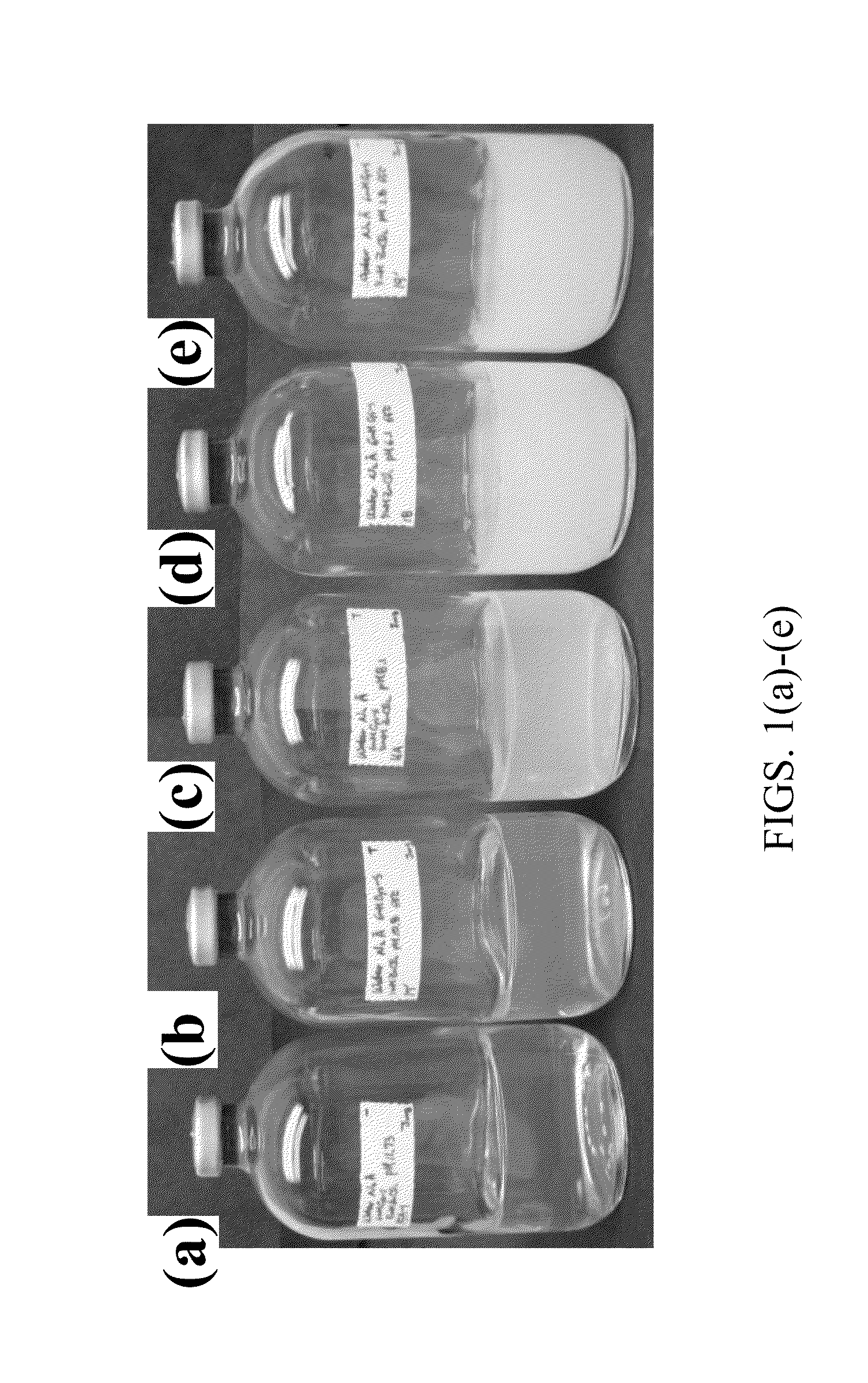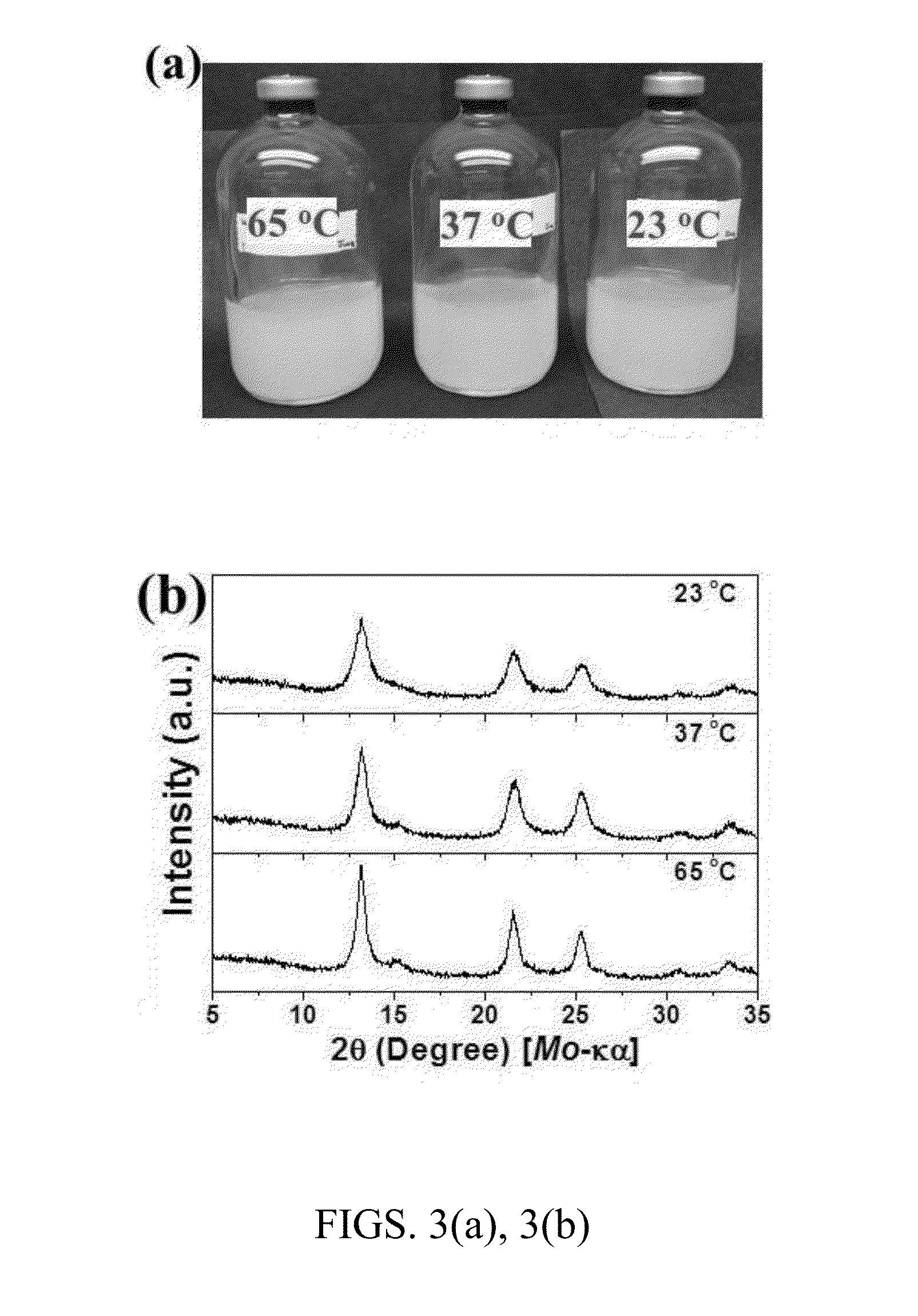Controllable reductive method for synthesizing metal-containing particles
a reductive method and metal-containing technology, applied in the field of inorganic particles, can solve the problems of prohibitively expensive commercially significant quantities of commercially significant quantities of commercially significant amounts of resulting nanoparticles, physical techniques are typically not useful for synthesizing semiconductor nanoparticles in commercially significant quantities, etc., and achieve the effect of reducing costs
- Summary
- Abstract
- Description
- Claims
- Application Information
AI Technical Summary
Benefits of technology
Problems solved by technology
Method used
Image
Examples
examples
Preparation of ZnS Nanoparticles
[0144]ZnS nanoparticles were synthesized by dosing of ZnCl2 precursors in degassed water with Cysteine-S (Cys-S) under careful pH control. All chemicals used (e.g., zinc chloride, L-cysteine, sodium sulfide nonahydrate, hydrochloric acid and sodium hydroxide) were of analytical grade and were used without further purification. Water was used as a solvent in the reactions, and was degassed by boiling and cooling under nitrogen gas, dispensed into pressure tubes, serum bottles, and culture bottles anaerobically, sealed, and then sterilized in an autoclave. Cys-S complexes with tailored ratios were prepared by adding sodium sulfide of 250 mM concentration into L-cysteine solution (dissolved in degassed water) at concentrations of 5 mM, 25 mM, 50 mM, and 250 mM, and then stored under nitrogen gas.
[0145]The synthesis of ZnS nanocrystals was performed by adding Cys-S of 6 mM concentration followed by ZnCl2 of 5 mM concentration into the degassed water at ro...
PUM
| Property | Measurement | Unit |
|---|---|---|
| size | aaaaa | aaaaa |
| size | aaaaa | aaaaa |
| size | aaaaa | aaaaa |
Abstract
Description
Claims
Application Information
 Login to View More
Login to View More - R&D
- Intellectual Property
- Life Sciences
- Materials
- Tech Scout
- Unparalleled Data Quality
- Higher Quality Content
- 60% Fewer Hallucinations
Browse by: Latest US Patents, China's latest patents, Technical Efficacy Thesaurus, Application Domain, Technology Topic, Popular Technical Reports.
© 2025 PatSnap. All rights reserved.Legal|Privacy policy|Modern Slavery Act Transparency Statement|Sitemap|About US| Contact US: help@patsnap.com



